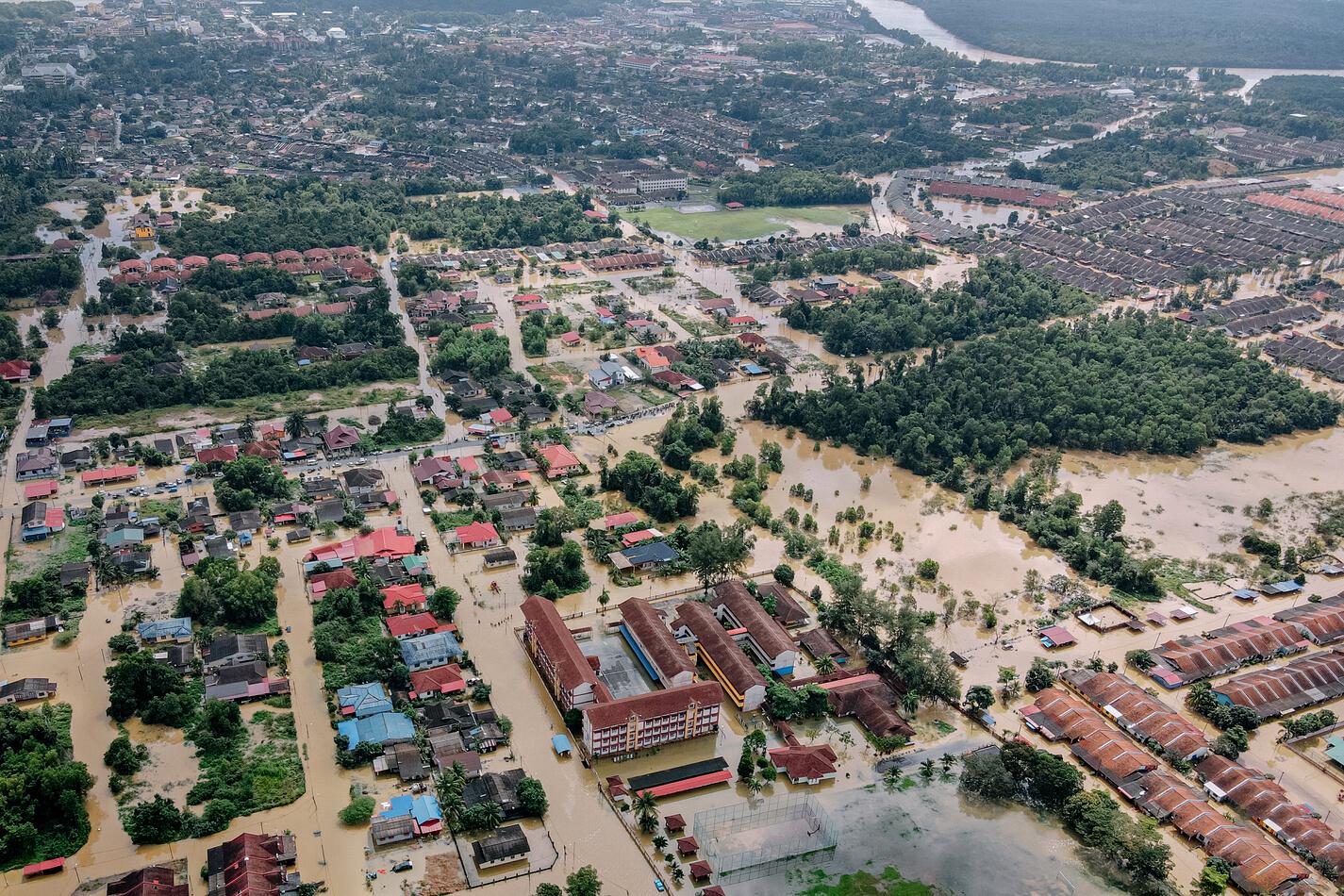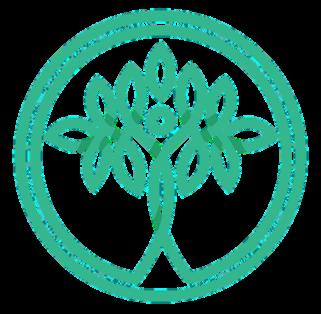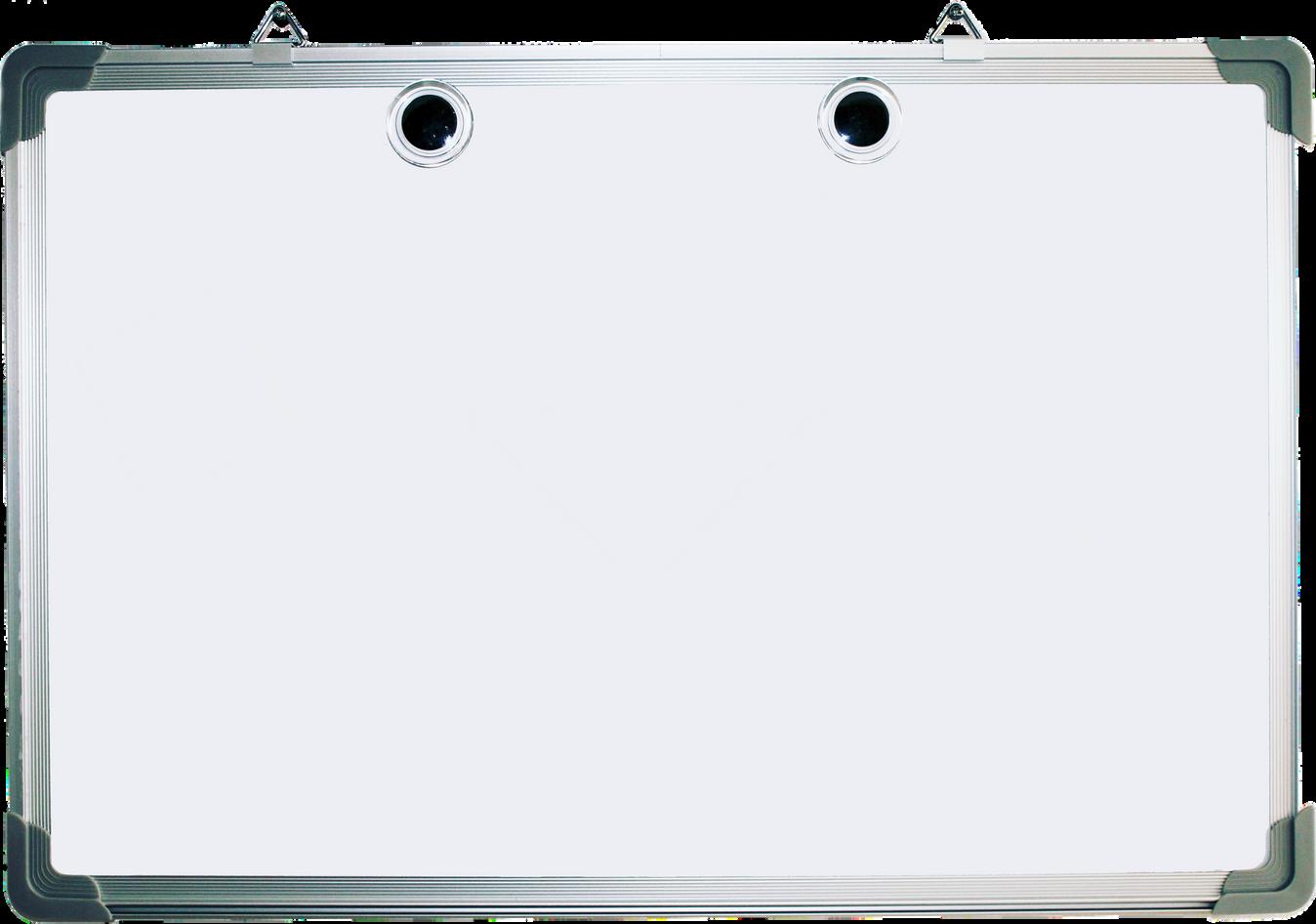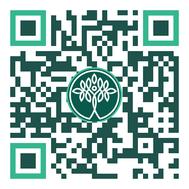

FROM THE CEO
SYDNEYCOUPLES COUNSELLING


MENTAL








As we near the end of another year here at Acacia, we are focused on how we can help your staff our clients finish off the year with their psychological and physical wellbeing flourishing
As we prepare to release this magazine, natural disasters continue to impact many communities across Australia There is also uncertainty in the economy, with the cost of living continuing to rise We appreciate the impact this is having on our psychological wellbeing. Despite this, finding some time over the coming weeks to celebrate successes is one way to help end the year positively
While there has been a strong emphasis on mental health over the past few months, with R U OK? Day celebrated in September followed closely by Mental Health Month, the conversations need to continue More than ever, it is important to have open discussions around mental health in the workplace, especially given the changing regulatory landscape.
We hope you have enjoyed Acacia Connect throughout 2022 We always welcome your thoughts and feedback on the content you would like to see in future editions. I wish you and your loved ones a happy and safe holiday, and I look forward to sharing more wonderful articles in 2023

The relationships we develop with others are vital to our mental and emotional wellbeing and, at times, our survival
For this reason, there is an inherent desire within us to feel accepted and close to others This creates a driving force to form connections and build relationships Despite this drive, we may find ourselves struggling to maintain these connections that we willingly and consciously enter.


Relationships can be challenging and, likewise, tested by life’s challenges One thing that is certain is there will be ups and downs over the course of a relationship. What is uncertain is whether we have the skills and abilities to navigate the rough patches and grow stronger together


Couples counselling seeks to bring partners together with the view to strengthen the relationship In addition to learning communication strategies, counselling may increase your capacity for problem solving You may develop skills to discuss differences and support one another. Counselling can also build awareness of behaviour patterns that are present in your relationship; this can help you recognise and respond to challenges in a more conducive manner

While we appreciate the multitude of issues a couple may face, some of the most common reasons for accessing couples counselling include unhealthy and ineffective communication, financial difficulties, a sense of being undervalued or underappreciated, and unrealistic or unfair expectations A lack of trust, support, or intimacy between partners are also common reasons, as are changes in shared goals and aspirations, parenting concerns stemming from differences in beliefs and values, and grief, loss, and trauma.
But many couples also engage in counselling proactively to strengthen their relationship such as before getting married, starting a family, or during life transitions such as retirement. Engaging in couples counselling should not just be seen as the fix to a problem, but rather as a process for creating healthy relationships.



Couples counselling is provided by experienced professionals with specific training in relationship therapy techniques and differs from individual counselling Couples counselling is often described as being more dynamic, with the professional facilitating the sessions to ensure both parties are heard.
During the counselling process, you will be guided to communicate in different ways with your partner, practising more effective communication strategies. When you begin to relate in more productive ways as a couple, you will find solutions to long standing problems or challenges
If you and your partner are considering couples counselling, you can access an experienced relationship counsellor through the EAP Our clinical team includes highly experienced and trained professionals, so contact us today to discuss support options available for you and your partner


Many of us have either directly or indirectly been exposed to a natural disaster, such as a bushfire, flood, severe storm, drought, cyclone, or earthquake These phenomenal events cause great distress, raising within us an array of complex emotions and states of being it’s common to experience shock, fear, anger, sadness, loneliness, and worry.





When you're watching on the news or reading articles online, you don’t always see the scale of the disaster, which, at its peak, can continue for days or weeks, with the recovery and aftermath continuing for months or even years beyond The implications and challenges associated with insurance claims, rebuilding homes, repairing businesses, and reestablishing livelihoods is complicated and devastating These events can have a profound impact on the mental health and wellbeing of those impacted for months or even years after.
And for many, this exposure has occurred more than once over a lifetime, and, more recently, within a short span of time

Increasingly, we are seeing a number of regions being hit with one disaster after another, with the compounding effects of these taking a heavy toll on individuals and communities

Repeated exposure to natural disasters can lead to a range of mental health effects. This can include heightened anxiety, risks of depression, post traumatic stress disorder, and even a loss of sense of identity
There is considerable information shared about preparing physically and practically for these events, and what to do during an emergency situation However, psychologically preparing before a natural disaster is also essential.
It is also important to note that while there is at times capacity to prepare for some events like floods, many natural disasters come without warning and only provide a limited time to prepare for their potential devastation

Being psychologically prepared for a disaster can help you feel more confident and in control. It can also assist in your recovery, reducing the longer term mental health concerns that can result from trauma
So, what can you do when there is a higher likelihood of a natural disaster, or when a natural disaster is imminent? When it comes to managing the psychological impact of the situation at hand, the Australian Psychological Society proposes the four step process AIME: Anticipate, Identify, Manage, and Engage

Anticipate encourages us to acknowledge our potential cognitive and emotional reactions to a disaster. When experiencing stress during a natural disaster, it can sometimes feel like there is something wrong with you But educating yourself on stress responses can normalise your experience and help you understand your needs and the most effective course of action
Consider how you usually react to stress If you know your usual reactions, you may feel better prepared to manage them when they happen
Identify is the process of raising awareness of our thoughts and feelings. It is about tuning in to the specific thoughts and feeling you have in response to a threatening natural disaster So, what are yours?
What are your main concerns about natural disasters? What exactly are your thoughts saying to you and are they helping you or making things harder? What are the main strengths you bring to responding to a natural disaster? What can you do now to help prepare yourself for future events?
Manage explores how we will respond to stress, and the strategies we can look to that will help us feel more in control There are many effective strategies that help manage your stress response. These aim to support your sense of control and influence over the experience
Grounding is a fantastic technique that brings your attention back to the present moment. It works to connect you to your physical senses and remind your brain that you are safe in the here and now
Relaxation strategies such as breathing exercises, meditation, yoga, visualisation, and muscle relaxation techniques are also highly beneficial These help to alter our physiological responses to stress, returning our breathing rate to normal and reducing stress hormones. And, of course, physical activity can help manage stressful situations
Lastly, thought management exercises are useful when you are troubled by ongoing or recurring distressing thoughts These include distraction, imagery, or even more formal strategies such as cognitive restructuring
Thought management works by taking unhelpful thoughts and replacing them with ones that will support you in seeing your way through the current concern For example, replace thoughts of, ‘I can’t cope’ with ‘I’m doing the best I can with what I have available to me’.
Engage is about reaching out and linking in with your support network Talking through and sharing your thoughts and feelings with someone you trust is vital no more so than when you’re in a state of distress.
Of course, you don’t have to talk about the event Sometimes it’s more about the sense of connection and availability of support than anything else
Thankfully for many, we will recover well and avoid any ongoing mental health concerns after a natural disaster. Supporting our recovery is the availability and willingness to draw upon an informal support network like our friends, family, and even members of the community.
It is also the ability to draw upon our own internal resources developed those skills and strategies that allow us to function through times of stress.
The thought of going through a natural disaster can in and of itself be overwhelming and debilitating For many people who have experienced disaster directly in the past, even a small incident can be a reminder of a previous significant disaster and illicit the strong emotional reactions experienced during these past events

A reminder that support is always available to you through your EAP, both to build psychological preparedness as well as in the event of a natural disaster or emergency. Connect with us today to learn more about the options available to you and how we can best assist



Work life balance is often defined as a state of equilibrium in which the demands of both a person's job and personal life are equal. When we consider the multiple roles that we hold and fulfil, perhaps work life balance is not the pursuit of equilibrium per se, but rather the intention to involve oneself in a meaningful and considered manner across all facets of life. It’s about finding a balance of priorities and commitments that work for us as an individual
Work life balance is not a new concept. We all understand its basic premise. Perhaps, however, we have not appreciated the need to review and consider what a work life balance means for us today As we learn and grow, experiencing life’s challenges and changes, how we define a good balance for ourselves will, inevitably, change
In recent years, our professional and personal lives have become increasingly enmeshed. Flexible working conditions see many of us working from home, shortening the physical and emotional space between these two lives Likewise, with technological advancements, not only are we always contactable, but we are also reachable via multiple platforms
While we may all appreciate the benefits derived from such circumstances such as the availability of extra time there is a pitfall.
Rather than the two roles working in harmony, strengthening and supporting our capacity to be present in each domain, they instead overwhelm us, leaving us both physically and emotionally exhausted, stressed, and often feeling isolated and disconnected from others
While these reasons alone highlight the benefit of establishing a good work life balance, there are a few more that might entice you to start tackling or perhaps revisiting your definition of work life balance. Perhaps you’re looking to enhance your relationships and connections with others or increase your productivity and capacity for creativity Maybe you’re looking to reduce your stress levels. Or rather you’re just looking for an opportunity to experience greater success and fulfilment
If you want to create a more balanced life, then let’s broaden the definition from one of establishing equilibrium to understanding what is of importance and value to you
Since work life balance is defined by you, starting by accepting your role and responsibility in establishing work life balance is key Only you can define what it looks likes and how it is achieved Once you feel ready to accept and embrace the responsibility, make a list of what you value and find important.

Our values are what we place greatest or most significant importance; they have the capacity to change and evolve with us, and serve as a compass, providing guidance and informing our choices and behaviours daily For instance, a person who values family might prioritise their time with their family members or gravitate towards jobs that allow them to take time out to attend school events

Knowing our values serves as a call to action so knowing how to protect them and keep them safe is integral. This is where boundaries are essential Boundaries are the unique, individualised limits and rules that we set for ourselves that protect our values, time, energy and, in general, what we deem important to us. Boundaries aid to enforce appropriate limits and set expectations, ensuring we aren’t overstretched or overwhelmed
Remember, Rome wasn’t built in a day, so start small Perhaps you may set yourself a weekly challenge like identifying one value patience, respect, connection, health and over the course of the week, find one action you can take that aligns with this value. Perhaps you’ll integrate this action into your daily routine or commit to it twice a week
Pay attention to the impacts your choice and actions have on how you feel about yourself, about your connections with others, or even about your life in general Sometimes it’s the smallest steps that create the greatest impact
As the year comes to a close and we take stock of the year that was, there’s no better time to reflect upon our workplace achievements and celebrate our successes We spend a large part of our lives at work It represents a large part of who we are we forge relationships, derive purpose, and make valuable contributions within the larger tapestry of life simply by doing the work that we do
But why is it important to celebrate successes? Simply, celebrating our successes makes us feel good


Celebration is also a key aspect of reflection. Through self reflection, we explore what we have done and what has led to our success or failures We review where we could improve or how we could achieve the same or better results in the future.
the journey that led to the outcome. But as humans, we are often programmed towards a negative bias, naturally focusing on where we failed It is important to look at these failures so that we can learn from them and improve our skills However, it is just as important to celebrate and appreciate the things that have been successful where we have achieved the desired outcome
The end of a busy and challenging year is an even more crucial time to pause and reflect on our achievements to celebrate successes There are many areas where success can be celebrated in the workplace completing projects, achieving goals, meeting quotas, receiving positive feedback from customers, or even business anniversaries.
both the big wins and the small wins.
Look back over the past year what have you accomplished? At this time of the year, we may have forgotten the accomplishments in the earlier months so take time to go back through your calendar and look at each week and month
What did you get done? What have you achieved? What wins did you have along the way, and did you celebrate them at the time? Take time to appreciate the small opportunities, the big successes, and the achievements across the year as a whole.

Celebrating successes shouldn’t just be about external achievements
k within and celebrate personal successes. What were your personal goals for 2022 and did you achieve these? If you didn’t, what obstacles did you overcome? What were your personal development successes? And what did you achieve instead?
Celebrating your successes through self reflection is a practice that can help you build on your strengths and to re energise you for the coming year Having a sense of accomplishment brings feelings of contentment, boosted confidence, joy, and satisfaction
So, take some time to pause and reflect on your achievements in 2022 Celebrate your successes

The holiday season is generally promoted as a time of connection with loved ones, including family and friends For many people though, this time creates feelings of sadness You might be away from loved ones, either by choice or by situation You may feel anxious about the social commitments that come with the festive season. Or you may just have loneliness spells amid the celebration
For those who feel this sense of loneliness, holidays can be a time of additional stress. This can be even more noticeable on particular days, such as Christmas Day and New Year’s Eve While it is difficult to have these feelings on these days, it is normal to feel this way
Although some feelings of loneliness may still hang around, taking care of yourself can help you to generally feel better and enjoy your time to yourself
You might like to:
Finally finish that good book Try the new local café Plan to complete a personal project Discover a new hobby
You can then track your progress each day Noticing that you are spending your time doing things that boost your positivity or just are fun, will help take your thoughts away from feeling lonely.
To make the holiday season a little easier, here are five tips that can help with potential loneliness

Chat with others in the same situation. Talk to your friends and family, either online or in person. Participate in local holiday activities, get to know your neighbours, or even join a new community group.
R E F L E C T 02
Reflect on your thoughts. Loneliness is a feeling, not a fact or a reality Accept that this feeling will pass, and move forward.
G R A T I T U D E 03
Doing a gratitude journal each day can be a good way to help you remember what you do have in your life and what is important to you Start by naming just a few things you are thankful for; this can help you shift your mindset to positive things in the future
C O N T R I B U T E 04
Check out how you can contribute to your community Helping others can be a good way to feel the true spirit of the holiday season
S U P P O R T 05
We have EAP professionals available 24/7 during the holidays to help you better manage your feelings of loneliness


Sugar is the mainstream name for carbohydrates, which is an essential macronutrient needed for the functioning of your body In healthy doses, sugar is very important and beneficial to your health It can be an excellent source of fibre, vitamins, and minerals and is found in various plant based foods.
Ideally, we want to be having a healthy form of sugar with every meal However, when you overindulge in sugar, serious issues arise.
On one end of the spectrum, we have minor inconveniences like brain fog and poor concentration On the other end of the spectrum, we have serious problems like excessive weight gain, diabetes, heart disease and even conditions impacting the bowel
Sugar serves multiple roles in the body, both good and bad In terms of the good, sugar acts as the brain’s primary fuel source, which makes it easier for you to have a regular spread of energy across the day and to make quick and efficient decisions To obtain these positive benefits, we need to rely on the healthy forms of sugar, known as complex carbohydrates
On the flip side, when sugar is misused, its role in the body changes. In terms of its properties, sugar acts in a very similar way to an addictive substance The more we have, the more we want And the more we want the more we need!

This can create a nasty cycle of unhealthy eating behaviours, which can be very difficult to break; however, it’s not impossible and it can be achieved
 Australian Bureau of Statistics, (2021), Dietary Behaviours
Australian Bureau of Statistics, (2021), Dietary Behaviours
Sugars we want to be mindful of and to limit where possible include refined carbohydrates These are often found in:

Cakes
Pastries
Chocolate Ice cream Lollies

Carbonated beverages
Frozen yoghurt Fruit juice
Savoury & sweet biscuits Crackers
On the other hand, we want to make sure that our diet is full of complex carbohydrates which will support better health outcomes. These come from:
Multigrain bread
Multigrain wraps
Brown rice
High fibre pasta
Peas and corn
White & sweet potato Apples, bananas & pears
Legumes Milk and yoghurt
A quick tip is to think ‘the browner, the better’ Generally, this indicates that the carbohydrate has been less processed and contains more fibre than its refined counterpart But be mindful of exceptions to the rule though fruit, veggies, and dairy products
It’s important to recognise that sugar is an important element of a healthy diet You just need to make sure that you’re having appropriate amounts in healthy quantities
A little bit of refined carbohydrate sources are okay as well, but save them more for a special occasion (do I hear Christmas bells?), rather than an everyday food That way, we can obtain all of the benefits that sugar has to offer, while also enjoying a slice of cake here and there

tbsp spice mix (below)

tsp bicarbonate of soda
cup light extra virgin olive oil
tbsp milk
cup maple syrup Cookie cutter (optional)
tbsp ground cinnamon
tbsp ground ginger 1 tbsp mixed spice
tsp ground nutmeg
tsp ground clove
tsp ground turmeric Ground black pepper (to taste)
Preheat the oven to 150° Celsius In a bowl, mix the flour, the spice mix, and the bicarbonate soda In a food processor, mix the oil, milk, and maple syrup until combined. Add the wet ingredients to the dry ingredients and mix until dough forms Add additional flour if the mixture is too dry Roll the mixture into a ball shape and refrigerate for 60 minutes. Using a rolling pin, roll out the mixture to approximately 3 5mm thick Create funky shapes using a cookie cutter Bake for 10 minutes. Allow to cool before decorating and serving.

Mental health is often highly misunderstood, fuelled by unhelpful and inaccurate ‘truths’. These myths perpetuate a negative stigma towards mental health and those impacted by mental health concerns which are consequential to everyone's wellbeing So let’s explore some of these myths and start the process of becoming more informed.


Myth: Only Health Professionals can support someone with mental health concerns.
Health professionals can support an individual in addressing and managing their mental health concerns; however, one should never discount the power of our relationships and connections with others. The support and encouragement offered by those we love and trust can be invaluable to one’s mental wellness
If you have concerns for a friend or loved one, speak up and reach out Your words and your time may support someone in reaching out for support, validate their thoughts and feelings, or even just remind them they aren’t alone.

Myth: Our mental health only requires support and active participation when we have a mental health concern. Mental health is not a black and white state where you are either mentally healthy or mentally ill Rather, our mental health exists along a continuum, influenced and shaped by many factors, including changes in our environment This means we can work to improve and strengthen our mental wellbeing daily Remember: prevention is better than cure.
Myth: It’s impossible to prevent mental illness.
We all have the ability to influence our mental health. Research has shown there are many steps we can take to prevent the onset of a mental health condition
By taking a holistic approach to our wellbeing and actively engaging in healthy habits, we can increase our exposure to protective factors Good sleep hygiene, nutrition, and physical health as well as healthy supportive relationships and spiritual connectedness can all support our mental health.
– Desiderius Erasmus"Prevention is better than cure."
Myth: Mental health concerns are a sign of weakness.
Mental health is non discriminatory it's influenced by a myriad of factors, including genetics, environment, life history, family history, and stressors

Many individuals impacted by mental health concerns learn to draw upon greater resilience and coping skills than those unaffected. Not only can this help us manage mental health concerns, but it can help us navigate the ups and downs inherent in life
Myth: One counselling session is all I need to resolve my concerns.
The first session of support often focuses on developing the therapeutic relationship you get to know your mental health professional and, likewise, they get to know you From there, you will start to set goals and establish how you will work together Perhaps more than one session will be required for an individual to feel confident in their ability to cope with and manage their concern Of course, there is no rule to the duration required
Myth: Medication is all I need to manage my mental health condition.
It’s important to appreciate that psychiatric medications do serve not to cure mental illness but rather to reduce symptom presentation.
Broadly speaking, these medications seek to influence our brain chemistry, in particular neurotransmitters, that influence our thoughts and feelings. Often, they are used to offer us respite from symptoms, so we are better able to engage with talk based therapies
It may be that in reading this you recognised one or two of these myths as your own. For you, I hope that these brief words here have provided you with some new insights and perhaps encouraged you to seek out further information.

people, or 970 million people, in the world live with a mental disorder.


The perceived definition of workplace power is one where power is aligned to an employee's position a manager or director has more power than a frontline employee But this discounts the influence of other personal factors, such as our age, ability, ethnicity, race, gender, and religion. These can all impact power dynamics.

In the modern workforce, organisations aim to create an environment that empowers its people to think, speak, create, and yes, even fail freely. But, as long as managers have the power to hire and fire, a power imbalance will likely exist in our workplace relationships

What can we do to change this? If we can’t remove this inherent imbalance, can we at least reduce the impact?
In this unique ‘post COVID’ business climate where employees are leveraging their power to improve their working environment, has the imbalance shifted?
Power is defined as the capacity to make others act a certain way or believe in something It is a term sometimes used interchangeably, particularly in the workplace, with authority However, authority or positional power is given to a person through a position of management over another, hence has more legitimacy
It’s important to remember that power can be exerted both ways in an organisational hierarchy, but authority is always exerted downward to direct reports or subordinates
Workplace power is generated in two ways: it can be bestowed by others or it can be earned.
Everyone has power in workplace relationships, but it is not always equal
Bestowed power in the workplace is often aligned with a person’s authority or positional power Staff will listen to their manager and follow instructions because of their granted positional power this may not be because they agree with the direction, but rather fear the repercussions for not following.

Power that is earned comes from one’s social identity and experience Any person in a workplace can wield this type of power. When an employee feels empowered, their job performance, satisfaction, and commitment to the organisation all begin to rise
Relationships and power in the workplace are dynamic and reactive It is important to nurture these relationships while keeping the power imbalance in context
A healthy power dynamic is one where, despite the hierarchy, the imbalance between manager and subordinate is less obvious and common ground exists This is one where information flows freely up and down the chain of command, and everyone feels as though their opinions matter
Managers and leaders play an integral role in improving the perception of equality. As a first step, they can increase employee recognition and begin expressing gratitude and appreciation towards employees in both public and private forums
In addition, they can communicate and share information Employees feel respected when they are made aware of key information and when they can understand why senior management make the decisions they do.
Allow employees to express ideas Encourage idea sharing and the expression of opinions by all and then ask for feedback Introduce a way for upward feedback or suggestions on improvement Lastly, actively listen with curiosity, care, and empathy
Even those not in managerial roles can influence the power imbalance Seek to engage in open and transparent conversations with others, including management, and promote a culture of inclusion, not a 'them versus us'. Speak up in relation to your skills and knowledge, and what you bring to the relationship Review and reflect on your sense of purpose and meaning in and away from the work environment. Lastly, collaborate with others, allowing them to share their power with the group
Power is unavoidable it's inherent in any relationship with another. It's far more beneficial to ourselves and to those around us to embrace and work with it, and to see it for the opportunity it presents to our growth as individuals, work colleagues and leaders alike
The services available through your EAP can assist you in exploring ways to navigate through a relationship where a power imbalance exists Additionally, Acacia can support your organisation to foster a culture with greater equality and inclusion To learn more, connect with us today




The regulatory landscape for workplace mental health is changing, and organisations in Australia need to adapt In April 2022, Safe Work Australia published amendments to the model Work Health and Safety Regulations which clarified an employer’s obligations regarding psychological health and safety Following this, a Code of Practice providing guidance on how to manage psychosocial hazards at work was released in July.
Psychosocial hazards are defined by Safe Work Australia as aspects of work that can cause psychological harm. These hazards can create stress, which, if experienced over a long period of time or at high levels, can cause harm such as anxiety, depression, post traumatic stress disorder, or sleep disorders.
Previously, the WHS Act didn’t clearly define what was expected in relation to workplace psychological health, rather focusing on the risk assessment approach for physical health and safety. The key change in the recent amendments is that psychological health risks must also be managed using this risk management approach
Such an approach involves identifying hazards, assessing risks, taking appropriate measures to control these through elimination or minimisation, and reviewing the control measures to determine if they are working as intended.

Often described as the risks you can’t see, psychosocial hazards live in the facets of work like job demands, low job control, remote or isolated work, and exposure to traumatic events
Psychosocial hazards can also arise from the management of your employment, such as poor support, lack of role clarity, inadequate reward and recognition, poor organisational justice, or poorly managed organisational change.
Risks can be identified through consultation with your workers, using surveys or tools, and direct observation of work and behaviours. You can also review your available WHS data injury records, complaints/investigations, site inspection reports, absenteeism data, and records of hours worked.
Reviewing your EAP usage data can also help you identify psychosocial hazards in the workplace Acacia’s presenting concern data has been designed specifically to align with key psychosocial risks to assist in this key step

After identifying the risks, a risk assessment can help you determine how severe they are A risk assessment requires you to consider three factors: the duration (how long the work has been exposed to the hazard), the frequency (how often the worker is exposed), and the severity (how severe are the hazards and the workers’ exposures)
When conducting a risk assessment, consider hazards collectively, as workers may be exposed to more than one psychosocial hazard at any time Risks increase when exposure is longer in duration, more frequent, and more severe.
Assessing risk factors can be difficult to quantify Analysing your EAP usage presenting concern data with other key data sets can assist you to assess a particular psychosocial risk’s length of exposure, frequency, and severity. Key data sets might include the duration of concerns before seeking treatment, business unit/division concerns, and the Workplace Outcome Suite results.
Under the WHS legislation, organisations are required to eliminate the risks Where this is not reasonably practical to do so, they must minimise the risks as is reasonably practical

You must first aim to eliminate the risks. If this cannot be achieved, effective control measures must be considered

Every workplace is different, as are the control measures that an organisation uses, but they often include a combination of multiple control measures
Consulting with your workers can assist in identifying as many control measures as you can, giving you scope to trial and assess a variety of measures that are reasonably practicable to implement As psychosocial hazards can combine and interact with others, the means for controlling one hazard may also minimise the risks from other psychosocial hazards
The final step in the risk management process is to review the effectiveness of the control measures to ensure they are working as intended. If a control measure is not working, it must be modified or replaced
WHS reports, complaints, or grievances can identify when risks are not being adequately controlled and should trigger a review Site inspections and consultation are also common review methods, as well as recompleting initial psychosocial hazard assessments.

If the control measures effectiveness is low or in doubt, return to the risk management process and determine alternate or additional control measures.
The responsibility for managing one’s mental health has unfairly been placed solely on individual workers But this must stay in the past.
The amendments to the WHS Act strengthen the regulatory framework and make it clear that organisations have a responsibility to ensure their employees are safe from psychological harm. The organisation's responsibility doesn't end at responding to these hazards; they need to begin taking active steps to prevent psychological risks in the first place.



